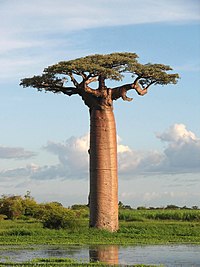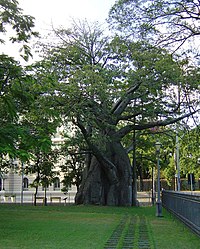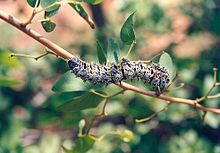http://www.creativenativeproject.com
To see my trees: http://www.franhardy.com
I only have to drive about 30 minutes and I am in the South African Bush. The Landscape inspires me.
Brian Rolfe biography
Brian Rolfe started his career in 1992 as a forensic artist in the South African Police Service. This gave him the opportunity to experience the technical side of producing art and his main line of work centred on facial identification and scull reconstruction. In this unit of the S.A.P.S the study of the human anatomy became very important which gave Brian the much-needed background to produce his own art.
Voted Artist of the Week on HYPERLINK "http://www.artween.com" www.artween.com with 115907 votes on 14 April 2009
Brian took part in a group exhibition in New York in 2009.
“Perceptions Of Reality” Ico Gallery, New York
February & March 2011. "In Vivid Color" Gallery-M, Euro – Asian Art Center Vienna
This year Brian took part in a group exhibition in Austria and will also exhibit in Turkey.
Brian was commissioned in 2007, to do paintings for British soccer star, Ashley Cole and his wife, pop sensation, Sheryl Cole.
In 2009 Brian was commissioned by Kevin Fick, owner of the Del Conte Suite at the Michel Angelo Hotel in Sandton to do a painting for FIFA President, Sepp Blatter .
On 24 June 2009, Brian presented the gift to Mr. Blatter at the Michelangelo Towers in Sandton, where he stayed during his time in South Africa. An enthusiastic audience of FIFA representatives was present. “It was a truly moving moment when I witnessed how touched Mr. Blatter was by this image. He instantaneously grasped my message and announced that the painting will find a special place in his home. It once again shows the power of an image to share a vision.”
Brian also completed commissions for Hollywood Actress, Embeth Davidtz, British soccer star, Kieron Dyer and South African actress, Brumilda van Rensberg.
His reputation and status as an artist have grown over the last 10 years and he is fast becoming a force to be reckoned with in the world of contemporary art.
“I have a very strong connection with Africa, the landscape and people that keep inspiring my work.”
“My work is a celebration of life and the power of the universe.
I have grown to express a feeling or mood rather than a realistic representation of the world we live in.
We have such a strong connection with the universe but it is often masked by our striving for existence and survival. “
“I expect my audience, when they see my work, to be triggered by something they know so well but have neglected to acknowledge for some time. To awaken in them a feeling or memory of the past, that will strengthen their connection with the earth and their reason for living.”
Please Contact me on 084 267 6074 wallworx@iburst.co.za
Google Brian Rolfe Art
Facebook Brian Rolfe Twitter brianrolfeart
More on some of the trees Brain paints and mentions in this article below.
http://en.wikipedia.org/wiki/Adansonia (Baobob tree)
dansonia is a genus of eight species of tree, six native to Madagascar, one native to mainland Africa and the Arabian Peninsula and one to Australia. The mainland African species also occurs on Madagascar, but it is not a native of that island.
A typical common name is baobab. Other common names include boab, boaboa, bottle tree, upside-down tree, and monkey bread tree. The generic name honours Michel Adanson, the French naturalist and explorer who described it.
Adansonias reach heights of 5 to 30 metres (16 to 98 ft) and have trunk diameters of 7 to 11 metres (23 to 36 ft). Glencoe Baobab - an African Baobab specimen in Limpopo Province, South Africa, often considered the largest example alive, up to recent times had a circumference of 47 metres (154 ft).[2] Its diameter is estimated at about 15.9 metres (52 ft). Recently the tree split up into two parts and it is possible that the stoutest tree now is Sunland Baobab, also in South Africa. Diameter of this tree is 10.64 m, approximate circumference - 33.4 metres.
Some baobabs are reputed to be many thousands of years old, which is difficult to verify as the wood does not produce annual growth rings, though radiocarbon dating may be able to provide age data.
[edit]Occurrence
The Malagasy species are important components of the Madagascar dry deciduous forests. Within that biome, A. madagascariensis and A. rubrostipa occur specifically in the Anjajavy Forest, sometimes growing out of the tsingy limestone itself.
Uses
Since 2008, there has been increasing interest for developing baobab as a nutrient-rich raw material for consumer products.[7][8]
The leaves are commonly used as a leaf vegetable throughout the area of mainland African distribution, including Malawi, Zambia, Zimbabwe, and the Sahel. They are eaten both fresh and as a dry powder. In Nigeria, the leaves are locally known as kuka, and are used to make kuka soup.[9][unreliable source?]
The fruit is nutritious, possibly having more vitamin C than oranges, and exceeding the calcium content of cow's milk.[10] The dry fruit pulp separated from seeds and fibers is eaten directly or mixed into porridge or milk, and is also known as "sour gourd" or "monkey's bread". In Malawi, the fruit pulp is used to make a nutrient-rich juice.[10] In Zimbabwe, the fruit is known as mawuyu in the Shona language and has long been a traditional fruit. In the coastal areas of Kenya, baobab seeds are called mbuyu and are cooked with sugar, colored, and sold as a snack.[citation needed] Mabuyu is also the term used in Tanzania for seeds of the calabash gourd, which are prepared in a similar fashion.
The fruit can be used to produce cream of tartar.[11] In various parts of East Africa, the dry fruit pulp is covered in sugary coating (usually with red coloring) and sold in packages as a sweet and sour candy called "umbuyu".
The seeds are mostly used as a thickener for soups, but may also be fermented into a seasoning, roasted for direct consumption, or pounded to extract vegetable oil. The tree also provides a source of fiber, dye, and fuel.
The dry pulp is either eaten fresh or used to add to gruels on cooling after cooking – a good way of preserving the vitamin contents. It can also be ground to make a refreshing drink with a pleasing wine-gum flavour. In Tanzania, it is added to aid fermentation of sugar cane for beer making.[12]
Pulp can be stored for fairly long periods for use in soft drink production, but it needs airtight containers. Storage is improved by the use of sodium metabisulphite (Ibiyemi et al., 1988). It can also be frozen if ground to a powder.
Indigenous Australians used baobabs as a source of water and food, and used leaves medicinally. They also painted and carved the outside of the fruits and wore them as ornaments. A very large, hollow baobab south of Derby, Western Australia was used in the 1890s as a prison for Aboriginal convicts on their way to Derby for sentencing. The Boab Prison Tree still stands and is now a tourist attraction.
The whole fruit of the baobab is not available in the EU, as current EU legislation from 1997 dictates that foods not commonly consumed in the EU have to be formally approved before going on sale. On 15 July 2008, the EU authorized the use of Baobab Dried Fruit Pulp as a food ingredient in smoothies and cereal bars.[13] More recently, Baobab Dried Fruit Pulp achieved GRAS status for these same food uses.[14]
Traditional uses of the whole fruit are unlikely outside of Africa, as the fruit will be processed for export as a white powder with a cheese-like texture to be used as an ingredient in products.[10]
The mopane or mopani (Colophospermum mopane) tree grows in hot, dry, low-lying areas, 200 to 1,150 metres (660 to 3,770 ft) in elevation, in the far northern parts of southern Africa, into South Africa, Zimbabwe, Mozambique, Botswana, Zambia, Namibia, Angola and Malawi. The tree only occurs in Africa and is the only species in genus Colophospermum. The species name mopane is taken from the local name for the tree. The mopane is in the legume family (Fabaceae)Distribution of MopaneIt is found growing in alkaline (high lime content) soils which are shallow and not well drained. It also grows in alluvial soils (soil deposited by rivers). In South Africa and adjacent areas of Botswana and Zimbabwe, the trees tend to vary between 4 and 18 m (13 and 59 ft), often called mopane scrub but also sometimes taller and forming woodland, where further north the trees are taller and form tall woodlands referred to as cathedral mopane. This tree does not grow well outside hot, frost-free areas with summer rainfall.Its distinctive butterfly-shaped leaf and thin, flimsy seed pod make it easy to identify. For human use it is, together with camel thorn and leadwood, one of the triad of definitive firewood trees. The name Colophospermum is Greek for "oily seed", in reference to the resinous seeds. The part of the name, colophos, apparently refers to the strong turpentine smell of the resin. Colophony is another name for rosin, a substance obtained from turpentine.
Uses
Mopane wood is one of southern Africa's heaviest timbers and is difficult to work because of its hardness.[citation needed] However, this also makes it termite resistant. For this reason it has long been used for building houses and fences, as railway sleepers and as pit props. The termite-resistance and rich, reddish colouring also make it popular for flooring. Outside Africa, mopane is gaining popularity as a heavy, decorative wood, its uses including aquarium ornaments, bases for lamps or sculptures, and garden accents.It is also increasingly being used in the construction of musical instruments, particularly woodwind. Suitable quality African blackwood (Dalbergia melanoxylon), traditionally used for clarinets, is becoming harder to find. Mopane is fairly oily, seasons very well with few splits or shakes, and produces instruments of a warm, rich tone.[1]Apart from timber, the tree is traditionally used to provide twigs to chew as tooth brushes, bark to make twine and for tanning, and leaves for healing wounds. The wood is also used to make charcoal and for braai wood.The tree is a major food source for the mopane worm, the caterpillar of the moth Imbrasia belina. The caterpillars are rich in protein and are eaten by people, and the sale of roasted or dried mopane worms can contribute significantly to rural economies. The tree also acts as a foodplant for a wild silk moth, Gonometa rufobrunnea. Cocoons of the moth are harvested as wild silk, to make cloth.
Uses
Mopane wood is one of southern Africa's heaviest timbers and is difficult to work because of its hardness.[citation needed] However, this also makes it termite resistant. For this reason it has long been used for building houses and fences, as railway sleepers and as pit props. The termite-resistance and rich, reddish colouring also make it popular for flooring. Outside Africa, mopane is gaining popularity as a heavy, decorative wood, its uses including aquarium ornaments, bases for lamps or sculptures, and garden accents.
It is also increasingly being used in the construction of musical instruments, particularly woodwind. Suitable quality African blackwood (Dalbergia melanoxylon), traditionally used for clarinets, is becoming harder to find. Mopane is fairly oily, seasons very well with few splits or shakes, and produces instruments of a warm, rich tone.[1]
Apart from timber, the tree is traditionally used to provide twigs to chew as tooth brushes, bark to make twine and for tanning, and leaves for healing wounds. The wood is also used to make charcoal and for braai wood.
The tree is a major food source for the mopane worm, the caterpillar of the moth Imbrasia belina. The caterpillars are rich in protein and are eaten by people, and the sale of roasted or dried mopane worms can contribute significantly to rural economies. The tree also acts as a foodplant for a wild silk moth, Gonometa rufobrunnea. Cocoons of the moth are harvested as wild silk, to make cloth.
The semi-deciduous Leadwood tree (Combretum imberbe Wawra) is found from KwaZulu-Natal Province of South Africa in the south to Tanzania in the north. It normally grows up to 20 metres (66 feet) tall. The Leadwood tree has a spreading, rather sparse, roundish to slightly umbrella-shaped crown and a single, thick trunk, with distinctive bark breaking up into fairly regular rectangular blocks. Radiocarbon dating, done in South Africa, has established that a Leadwood tree can live up to 1040 +/-70 years and subsequently remain standing for years after the tree has died.
[edit]Uses
- The wood is very hard, difficult to work, and termite resistant. It was once used for railway sleepers and is now prized as wood for ornamental work and furniture.
- It burns very slowly with intense heat, and is often used for a fire which is intended to burn all night in order to keep wild animals at bay. It is sometimes used in a barbecueto provide a hot, long-lasting flame.
- The ashes are used as whitewash for painting walls of kraal huts.
- The ashes can also be used as toothpaste when mixed into a paste with water
The Hereros and the Ovambos of Namibia regard the Leadwood tree as the great ancestor of all animals and people and they never pass it without paying it the necessary respect.









No comments:
Post a Comment